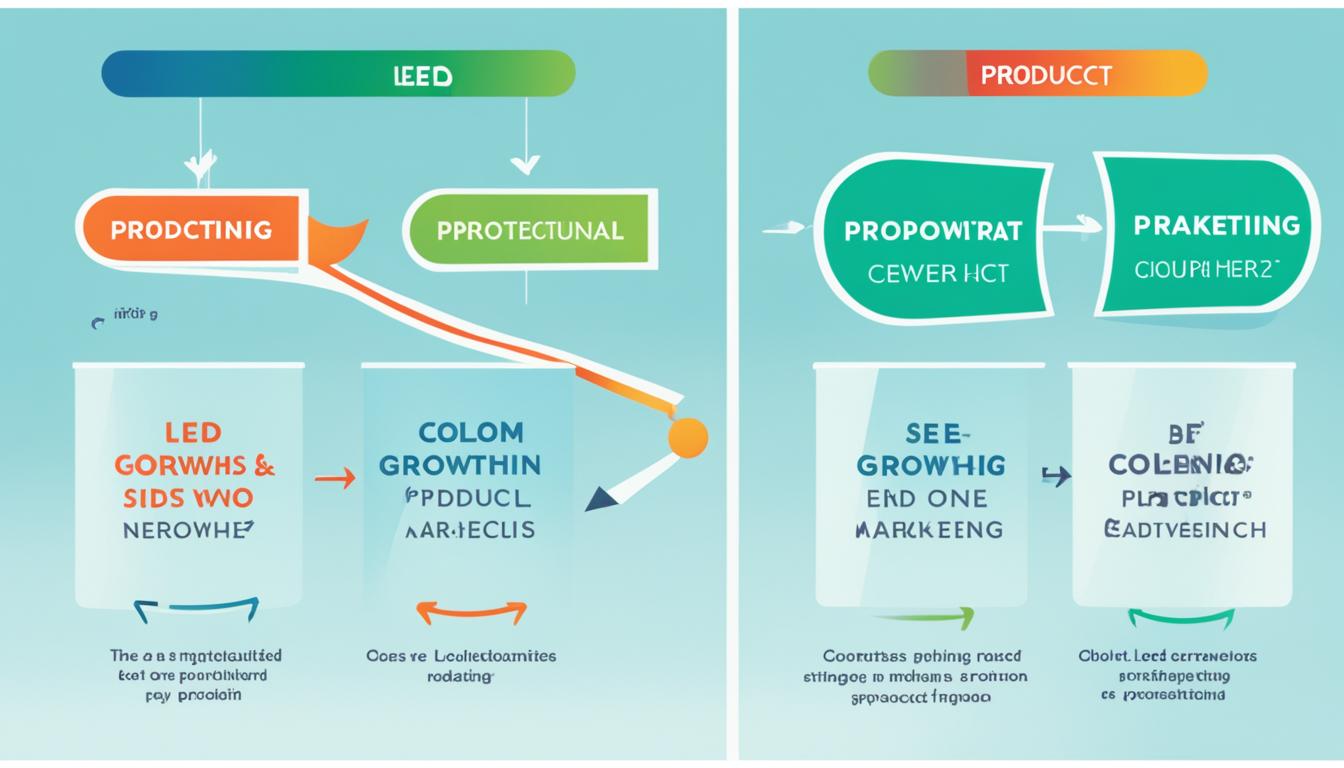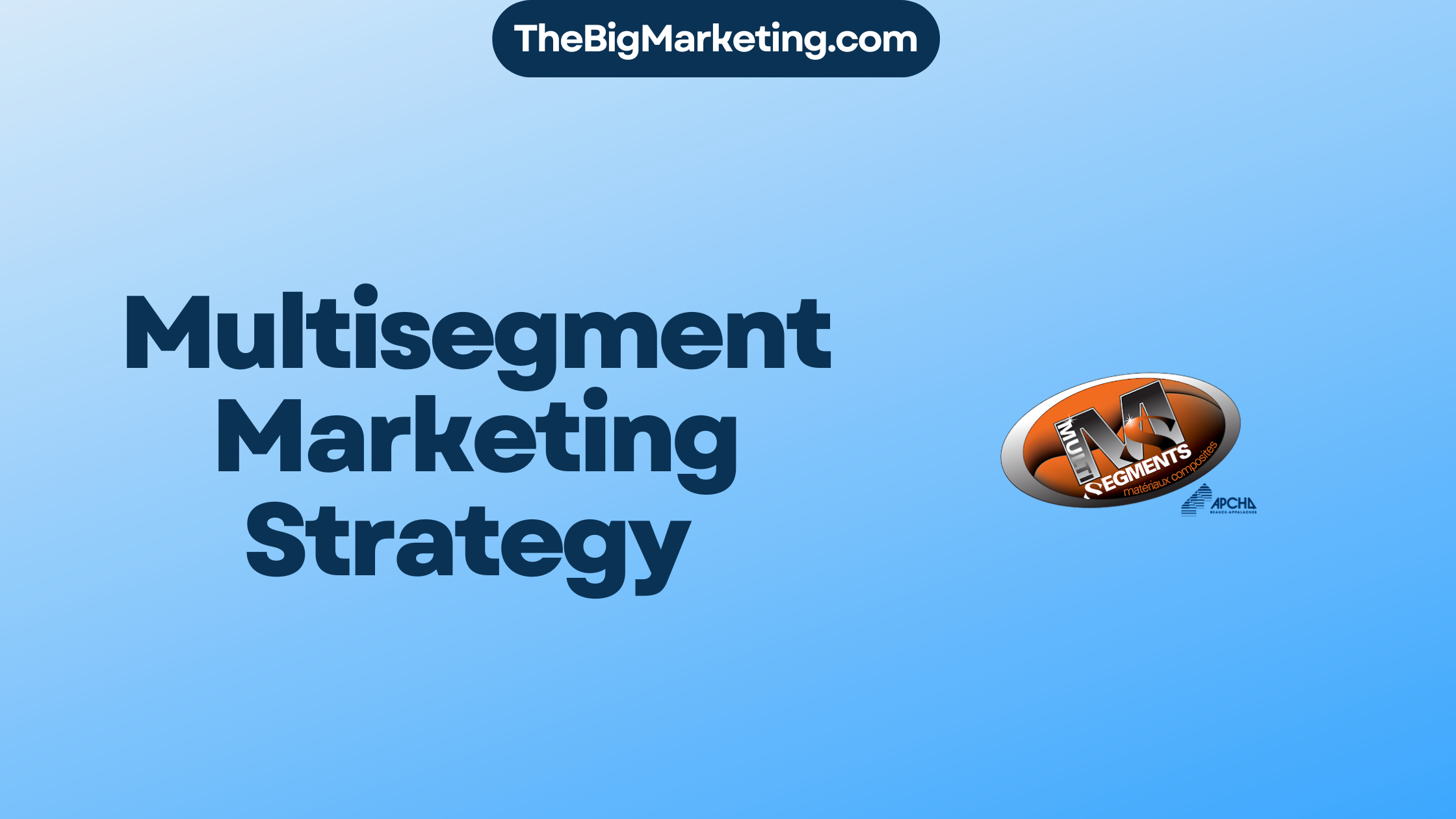Chevron, a renowned American multinational integrated oil and gas company with over 140 years of history, has developed a robust marketing strategy to position itself as a leader in the energy industry. By focusing on brand positioning, digital presence, sponsorships and partnerships, community engagement, and B2B marketing, Chevron aims to drive growth, promote sustainability, and connect with its target audience. Let’s take a closer look at Chevron’s marketing strategy and how it contributes to the company’s success.
Key Takeaways:
- Chevron’s marketing strategy revolves around brand positioning, digital presence, sponsorships and partnerships, community engagement, and B2B marketing.
- The company focuses on innovation, sustainability, and environmental responsibility as key elements of its brand positioning.
- Chevron actively cultivates a strong online presence through a user-friendly website, social media engagement, and content marketing.
- Sponsorships and partnerships allow Chevron to amplify its reach and impact, reinforcing its brand image as a responsible organization.
- Chevron prioritizes community engagement, focusing on health, education, economic development, and environmental protection.
About Chevron
Chevron is an American multinational integrated oil and gas company with a rich history that spans over 140 years. The company’s operations cover the entire oil and gas chain, including exploration, production, refining, and marketing. With a commitment to innovation, sustainability, and customer satisfaction, Chevron has positioned itself as a leader in the energy industry. With operations in over 30 countries, Chevron is one of the largest energy companies in the world.
Chevron’s extensive expertise and global reach make it a prominent player in the oil and gas sector. The company is involved in every step of the energy value chain, from discovering and extracting hydrocarbons to refining them into high-quality products. This integrated approach allows Chevron to have greater control over its operations and deliver value to its customers.
As an integrated energy company, Chevron focuses on providing reliable and affordable energy solutions to meet the world’s growing demand. The company is committed to responsibly managing its resources, minimizing its environmental impact, and contributing to the communities in which it operates.
| Key Facts about Chevron | |
|---|---|
| Founded | 1879 |
| Headquarters | San Ramon, California, United States |
| Operations | Over 30 countries |
| Industry | Oil and Gas |
| Primary Activities | Exploration, Production, Refining, Marketing |
| Employees | Over 48,000 |
| Revenue | $146.5 billion (2020) |
| Website | www.chevron.com |
Commitment to Sustainability
Chevron recognizes the importance of sustainability and is actively working towards reducing its environmental footprint. The company invests in research and development to develop cleaner and more efficient energy technologies. Additionally, Chevron is involved in renewable energy projects, such as wind and solar, aiming to diversify its energy portfolio.
Furthermore, Chevron takes its social responsibility seriously and strives to positively impact the communities it operates in. Through initiatives focused on education, health, and economic development, Chevron aims to create long-term value and leave a lasting positive legacy.
With its strong commitment to innovation, sustainability, and community engagement, Chevron continues to be a leading force in the integrated energy sector.
Strengths of Chevron
Chevron, as a prominent player in the energy industry, possesses several key strengths that contribute to its success:
- Strong Brand and Brand Price: Chevron’s brand is highly regarded and recognized globally. Its reputation for quality products and services commands a premium price in the market.
- Vertical Integration: Chevron’s integration across the entire oil and gas value chain, from exploration and production to refining and marketing, provides operational efficiencies and cost advantages.
- Research and Development: Chevron is committed to continuous innovation and invests significantly in research and development. This focus allows Chevron to improve technology, develop new energy solutions, and reduce its environmental impact.
- Geographic Presence: With operations in over 30 countries, Chevron has a vast geographic presence, enabling it to access diverse markets and mitigate risks associated with regional economic and political fluctuations.
These strengths contribute to Chevron’s ability to remain competitive in the ever-evolving energy industry. By leveraging its brand reputation, vertical integration, research and development efforts, and global presence, Chevron is well-positioned to capitalize on emerging opportunities and navigate challenges.
| Strengths | Description |
|---|---|
| Strong Brand and Brand Price | Chevron’s brand is highly regarded and commands a premium in the market. |
| Vertical Integration | Chevron covers the entire oil and gas value chain, providing operational efficiency. |
| Research and Development | Chevron invests in R&D to improve technology and reduce environmental impact. |
| Geographic Presence | With operations in over 30 countries, Chevron has a wide geographic reach. |
Weaknesses of Chevron
While Chevron is a formidable player in the energy industry, the company is not without its weaknesses. Recognizing and addressing these weaknesses is crucial for Chevron’s long-term success and sustainability. The following are some key weaknesses that Chevron faces:
- Increasing Debts: Chevron is burdened with increasing debts, which can negatively impact its financial stability and restrict its ability to invest in growth opportunities.
- Shortage of Resources: Chevron experiences challenges related to a shortage of technical and financial resources. This shortage can hinder the company’s ability to innovate and compete effectively.
- Government Regulations: Strong government regulations and policies pose a challenge for Chevron. These regulations can limit the company’s operations, increase compliance costs, and impact profitability.
- Environmental and Social Impacts: Chevron has faced scrutiny and criticism for its environmental and social impacts. Issues such as oil spills, emissions, and community disruptions can tarnish the company’s reputation and lead to reputational and legal risks.
- Legal Issues: Chevron has encountered legal issues in various jurisdictions, including lawsuits and legal disputes. These legal challenges can be costly, time-consuming, and harm the company’s financial performance.
Addressing these weaknesses requires strategic solutions and proactive measures. By implementing sound financial management, focusing on resource optimization, engaging in constructive dialogue with regulators, adopting sustainable practices, and prioritizing legal compliance, Chevron can overcome its weaknesses and strengthen its position in the energy industry.
Opportunities for Chevron
Chevron, as a leading integrated energy company, is well-positioned to take advantage of several opportunities in the market. These opportunities arise from various factors driving the energy industry forward.
The Demand for Natural Gas
One significant opportunity for Chevron lies in the increasing demand for natural gas. As countries around the world shift towards cleaner energy sources, natural gas is emerging as a more environmentally-friendly alternative to traditional fossil fuels. Chevron’s expertise in natural gas exploration, production, and delivery positions it to meet the growing demand for this cleaner energy option.
Growth of Renewable Energy
Another opportunity for Chevron is the rapid growth of renewable energy. As global concerns about climate change intensify, there is a greater push towards renewable sources such as wind, solar, and hydroelectric power. Chevron can leverage its resources and expertise to invest in renewable energy projects, diversifying its portfolio and contributing to a sustainable future.
Global Economic Growth
The global economy’s steady growth presents Chevron with an opportunity to meet increased energy demand. As economies expand, there is a greater need for energy to power industries, businesses, and households worldwide. Chevron’s vast operations and global presence enable it to tap into the various emerging markets and contribute to meeting this rising energy demand.
Demand-Supply Gap
A significant opportunity for Chevron lies in bridging the demand-supply gap in the energy market. Forecasted growth in energy demand outpaces supply in many regions, creating a substantial potential for Chevron to expand its market share. By increasing its production capacity and optimizing its supply chain, Chevron can capitalize on this disparity and satisfy the energy needs of various markets.
By strategically capitalizing on these opportunities, Chevron can strengthen its position as a global energy leader. Taking advantage of the increasing demand for natural gas, the growth of renewable energy, global economic growth, and addressing the demand-supply gap will allow Chevron to expand its market presence and contribute to sustainable energy solutions.
| Opportunities for Chevron | Key Factors |
|---|---|
| The Demand for Natural Gas | Increasing shift towards cleaner energy sources |
| Growth of Renewable Energy | Global focus on sustainable energy solutions |
| Global Economic Growth | Increasing energy demand from expanding economies |
| Demand-Supply Gap | Opportunity to bridge the energy demand-supply disparity |
Threats to Chevron
Chevron, like any other company, faces various threats that require careful management to ensure its long-term success. These threats include potential lawsuits in multiple markets, the shift towards eco-friendly fuel impacting their products, the impact of climate changes on operations, political volatility in the energy sector, and intense competition.
Lawsuits can arise from various issues, such as environmental claims, contractual disputes, or regulatory challenges. Chevron must proactively address these legal challenges to protect its reputation and financial standing.
The global push towards eco-friendly fuel options poses a significant threat to Chevron’s traditional oil and gas products. The company needs to adapt its offerings and invest in alternative energy sources to stay competitive in the evolving market.
Climate changes present challenges for Chevron’s operations, including extreme weather events and rising sea levels, which can impact infrastructure and production capabilities. The company must implement sustainable practices and invest in resilience measures to mitigate these risks.
Political volatility in the energy sector can disrupt Chevron’s operations, particularly in regions where government policies and regulations are subject to change. Collaborating with local stakeholders and maintaining constructive relationships with governments is crucial for navigating political uncertainties.
Lastly, Chevron faces intense competition in the energy industry from both traditional and emerging players. The company must continuously innovate and optimize its operations to maintain its market position and capture new opportunities.
The Impact of Lawsuits
Lawsuits are a significant threat to Chevron’s business. They can arise from a range of issues, including environmental claims, contractual disputes, and regulatory challenges. These lawsuits can result in financial liabilities, damage to the company’s reputation, and potentially disrupt its operations. Chevron must have robust legal strategies in place to proactively address and mitigate these legal challenges.
The Shift Towards Eco-friendly Fuel
The increasing global focus on eco-friendly fuel poses a threat to Chevron’s traditional oil and gas products. As consumers and governments prioritize environmental sustainability, there is a growing demand for clean energy alternatives. Chevron must adapt its offerings and invest in renewable energy sources to remain relevant and competitive in the evolving market.
The Impact of Climate Changes
Climate changes, including extreme weather events and rising sea levels, pose risks to Chevron’s operations. These changes can damage infrastructure, disrupt supply chains, and impact production capabilities. To mitigate these risks, Chevron must implement sustainable practices, invest in resilience measures, and adapt its operations to minimize its environmental impact.
Political Volatility in the Energy Sector
The energy sector is prone to political volatility, with government policies and regulations subject to change. This volatility can affect Chevron’s operations, particularly in regions where it has a significant presence. To navigate political uncertainties, Chevron must actively engage with local stakeholders, maintain constructive relationships with governments, and stay informed about regulatory developments.
Intense Competition
Chevron operates in a highly competitive industry, facing competition from both traditional energy companies and emerging players. To maintain its market position and stay ahead of the competition, Chevron must focus on continuous innovation, operational optimization, and capturing new growth opportunities. By differentiating its products and services, Chevron can better position itself in the market and retain its customer base.
Brand Positioning
Chevron’s brand positioning revolves around innovation, sustainability, and environmental responsibility. The company is committed to developing clean energy solutions and delivering high-quality products that meet the evolving needs of its customers. Through various advertising campaigns, Chevron effectively communicates its dedication to sustainable practices and environmental stewardship.
Chevron’s brand positioning is not limited to communication alone; the company actively invests in research and development to stay at the forefront of technological advancements in the energy industry. By constantly seeking innovative solutions, Chevron aims to provide sustainable energy options that minimize environmental impact.
Innovation
Chevron’s continuous investment in research and development enables the company to pioneer new technologies, enhance operational efficiency, and create innovative products. This focus on innovation positions Chevron as an industry leader, driving growth and enabling a competitive edge.
Sustainability
Chevron’s commitment to sustainability extends beyond compliance with regulations. The company prioritizes sustainable practices throughout its operations, from minimizing carbon emissions to reducing waste and promoting energy efficiency. By focusing on sustainable development, Chevron aims to contribute positively to the environment and protect natural resources for future generations.
Environmental Responsibility
Environmental responsibility is an integral part of Chevron’s brand positioning. The company actively works to mitigate its environmental impact by implementing responsible practices and adopting advanced technologies that reduce emissions and conserve resources. Chevron’s environmental initiatives align with its goal of supporting a cleaner and greener energy future.
Overall, Chevron’s brand positioning as an innovative, sustainable, and environmentally responsible energy company helps establish its reputation as a reliable and accountable industry leader. By staying true to these core values, Chevron maintains its competitive edge and fosters long-term success in a rapidly changing energy landscape.
Digital Presence
Chevron understands the significance of establishing a strong digital presence in today’s digital landscape. By leveraging various digital strategies, Chevron effectively communicates its brand message, engages with customers, and stays ahead of the competition in the energy sector.
User-Friendly Website
A central element of Chevron’s digital presence is its user-friendly website. Designed with the user in mind, the website serves as a comprehensive resource for visitors, providing easy access to information about Chevron’s products, services, and sustainability initiatives. The user-friendly interface ensures a seamless browsing experience, allowing visitors to navigate through the site effortlessly.
Social Media Engagement
In addition to its website, Chevron actively engages with its audience on various social media platforms, including Facebook, Twitter, and LinkedIn. Through regular and meaningful interactions, Chevron fosters a sense of community and connects with customers on a deeper level. By sharing valuable content, industry news, and updates, Chevron strengthens its brand presence and builds trust among its social media followers.
Search Engine Optimization
Search engine optimization (SEO) plays a crucial role in Chevron’s digital strategy. By optimizing its website and content, Chevron improves its visibility on search engine results pages, driving organic traffic and attracting potential customers. Through keyword research, on-page optimization, and other SEO techniques, Chevron ensures that its online presence is easily discoverable by users searching for relevant information, products, or services.
Content Marketing
Content marketing is a key component of Chevron’s digital presence strategy. By creating and distributing valuable and informative content, Chevron provides its audience with relevant industry insights, expert advice, and educational resources. This content not only enhances Chevron’s search engine visibility but also positions the company as a thought leader in the energy sector, strengthening its brand authority and credibility.
| Benefits of Chevron’s Digital Presence | Keywords |
|---|---|
| Effective communication of brand message | brand message |
| Enhanced customer engagement | customer engagement |
| Improved brand visibility and search engine rankings | brand visibility, search engine rankings |
| Establishment of thought leadership | thought leadership |
| Increased organic traffic to the website | organic traffic |
Sponsorships and Partnerships
Chevron actively cultivates sponsorships and partnerships to amplify its reach and impact. Through collaborations in various areas, including education, professional development, and community engagement, Chevron strives to make a positive difference.
Educational Initiatives
As part of its commitment to education, Chevron partners with organizations like Fab Labs and Project SEED. These collaborations support initiatives that provide students with opportunities to explore science, technology, engineering, and math (STEM) fields, empowering them for future success.
Professional Development Opportunities
Chevron collaborates with institutions like MIT to provide professional development programs for employees. These initiatives enhance skills and knowledge, fostering professional growth and enabling Chevron employees to stay at the forefront of industry advancements.
Community Engagement
Chevron sponsors events such as the Chevron Championship, which brings communities together through sports. These partnerships create opportunities for community members to come together, promoting inclusivity and fostering a sense of belonging.
Moreover, Chevron actively engages in community development initiatives that contribute to areas such as health, education, and economic growth. By forging partnerships with local organizations and investing in community-based projects, Chevron aims to create lasting positive change.
| Partnerships | Focus areas |
|---|---|
| Fab Labs | STEM education |
| Project SEED | STEM education |
| MIT | Professional development |
| Chevron Championship | Community engagement |
These partnerships and sponsorships allow Chevron to expand its influence, promote education and professional development, and demonstrate its commitment to communities. Through these collaborative efforts, Chevron reinforces its brand image as a responsible and community-oriented organization.
Community Engagement
Chevron recognizes the importance of community engagement in the areas where it operates. The company firmly believes in making a positive impact on society through various initiatives that focus on health, education, economic development, and environmental protection.
Health
Chevron actively supports programs that provide access to quality healthcare services for communities in need. By partnering with healthcare organizations and investing in medical facilities, Chevron aims to improve the overall health and well-being of individuals and families.
Education
Education is a cornerstone of Chevron’s community engagement efforts. The company collaborates with educational institutions, non-profit organizations, and community leaders to promote quality education and enhance learning opportunities. Through scholarships, mentoring programs, and educational initiatives, Chevron empowers individuals to build a brighter future.
Economic Development
Chevron is committed to fostering economic growth in the communities where it operates. The company supports entrepreneurship, job creation, and skills development to uplift local economies. By investing in infrastructure, training programs, and business partnerships, Chevron contributes to the long-term economic prosperity of the regions it serves.
Environmental Protection
Chevron places a strong emphasis on environmental protection and sustainability. The company actively engages in initiatives that promote conservation, reduce emissions, and advance clean energy solutions. By working in collaboration with environmental organizations and local communities, Chevron strives to minimize its environmental footprint and preserve the natural resources for future generations.
Through its community engagement efforts, Chevron demonstrates a genuine commitment to social responsibility. By focusing on health, education, economic development, and environmental protection, Chevron aims to create lasting positive change and improve the quality of life for individuals and communities around the world.
B2B Marketing
Chevron understands the importance of a robust B2B marketing strategy in forging strong partnerships and driving business growth. The company’s approach is centered around customer-centricity, social media engagement, and a targeted approach to effectively reach and engage with its business customers.
One key aspect of Chevron’s B2B marketing strategy is its customer-centric approach. By deeply understanding the needs, challenges, and goals of its business customers, Chevron is able to tailor its marketing efforts to provide value and meet those specific needs. This customer-centric approach helps build strong relationships and fosters loyalty among its B2B customers.
Social media engagement plays a vital role in Chevron’s B2B marketing strategy. The company actively participates on various social media platforms to connect with its business customers, share valuable content, and engage in meaningful conversations. Through social media, Chevron can showcase its expertise, build brand credibility, and nurture relationships with its B2B audience.
In addition to customer-centricity and social media engagement, Chevron adopts a targeted approach in its B2B marketing efforts. The company identifies specific industries and sectors that align with its offerings and develops industry-specific campaigns and partnerships. By focusing on these targeted segments, Chevron can effectively communicate with its intended audience and position its products and services as the ideal solutions for their needs.
Overall, Chevron’s B2B marketing strategy is characterized by customer-centricity, social media engagement, and a targeted approach. By understanding its customers, actively engaging on social media, and tailoring its messaging to specific industries, Chevron can effectively reach and engage with its business customers, driving growth and strengthening its position in the energy industry.
Conclusion
Chevron has developed a comprehensive marketing strategy that encompasses various elements to establish itself as a leader in the energy industry. Through strategic brand positioning, the company aims to engage with its target audience and promote sustainability. Additionally, Chevron recognizes the power of digital presence and actively leverages its website, social media, and content marketing to effectively communicate its brand message and maintain a competitive edge.
Sponsorships and partnerships further amplify Chevron’s reach and impact, allowing the company to connect with diverse audiences and reinforce its image as a responsible organization. Community engagement is also a key focus, as Chevron actively contributes to healthcare, education, economic development, and environmental protection in the communities where it operates.
With a customer-centric B2B marketing approach, Chevron tailors its efforts to meet the specific needs of its business customers, strengthening relationships and fostering long-term partnerships. By continuously adapting its marketing strategies to align with market trends and customer needs, Chevron is well-positioned for long-term success in the ever-evolving energy landscape.







